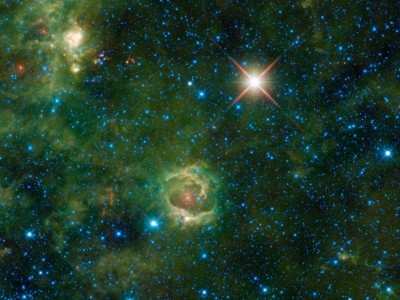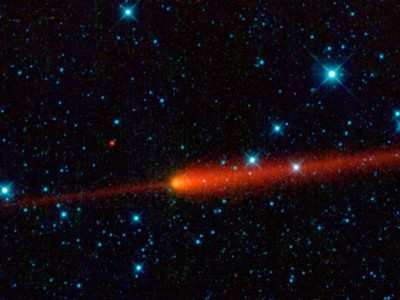Coolant Exhausted, But The Telescope Still Has Science To
Perform
After completing its primary mission to map the infrared sky,
NASA's Wide-field Infrared Survey Explorer, or WISE, has reached
the expected end of its onboard supply of frozen coolant. Although
WISE has 'warmed up,' NASA has decided the mission will continue.
WISE will now focus on our nearest neighbors – the asteroids
and comets traveling together with our solar system's planets
around the sun.

NASA WISE Telescope, NASA Image
"Two of our four infrared detectors still work even at warmer
temperatures, so we can use those bands to continue our hunt for
asteroids and comets," said Amy Mainzer of NASA's Jet Propulsion
Laboratory in Pasadena, Calif. Mainzer is the principal
investigator of the new phase of the mission, now known as the
NEOWISE Post-Cryogenic Mission. It takes its name from the acronym
for a near-Earth object, NEO, and WISE. A cryogen is a coolant used
to make the detectors more sensitive. In WISE's case, the cryogen
was frozen hydrogen.
WISE launched December 14, 2009, from Vandenberg Air Force
Station in California aboard a Delta II launch vehicle. Its 16-inch
infrared telescope scans the skies from an Earth-circling orbit
crossing the poles. It has already snapped more than 1.8 million
pictures at four infrared wavelengths. Currently, the survey has
covered the sky about one-and-one-half times, producing a vast
catalog containing hundreds of millions of objects from near-Earth
asteroids to cool stars called "brown dwarfs" to distant, luminous
galaxies.

NASA WISE Telescope Image
To date, WISE has discovered 19 comets and more than 33,500
asteroids, including 120 near-Earth objects, which are those bodies
with orbits that pass relatively close to Earth's path around the
sun. More discoveries regarding objects outside our solar system,
such as the brown dwarfs and luminous galaxies, are expected.
"The science data collected by WISE will be used by the
scientific community for decades," said Jaya Bajpayee, the WISE
program executive in the Astrophysics Division of NASA's Science
Mission Directorate at the agency's Headquarters in Washington. "It
will also provide a sky map for future observatories like NASA's
James Webb Space Telescope."

Comet Image Captured By NASA WISE Telescope, NASA
Image
The NEOWISE Post-Cryogenic Mission is designed to complete the
survey of the solar system and finish the second survey of the rest
of the sky at its new warmer temperature of about minus 334 degrees
Fahrenheit using its two shortest-wavelength detectors. The survey
extension will last one to four months, depending on early
results.
NEOWISE also will keep on observing other targets, such as the
closest brown dwarfs to the sun. In addition, data from the second
sky scan will help identify objects that have moved in the sky
since they were first detected by WISE. This allows astronomers to
pick out the brown dwarfs closest to our sun. The closer the object
is, the more it will appear to move from our point of view.

NASA WISE Image Of Andromeda Galaxy
The WISE science team now is analyzing millions of objects
captured in the images, including many never seen before. A first
batch of WISE data, covering more than half the sky, will be
released to the astronomical community in spring 2011, with the
rest to follow about one year later.
"WISE has provided a guidebook to the universe with thousands of
targets worth viewing with a large telescope," said Edward (Ned)
Wright, WISE principal investigator from University of California,
Los Angeles. "We're working on figuring out just how far away the
brown dwarfs are, and how luminous the galaxies are."
 Bolen Gives Congress a Rare Thumbs-Up
Bolen Gives Congress a Rare Thumbs-Up The SportPlane Resource Guide RETURNS!!!!
The SportPlane Resource Guide RETURNS!!!! Buying Sprees Continue: Textron eAviation Takes On Amazilia Aerospace
Buying Sprees Continue: Textron eAviation Takes On Amazilia Aerospace Hawker 4000 Bizjets Gain Nav System, Data Link STC
Hawker 4000 Bizjets Gain Nav System, Data Link STC Echodyne Gets BVLOS Waiver for AiRanger Aircraft
Echodyne Gets BVLOS Waiver for AiRanger Aircraft






